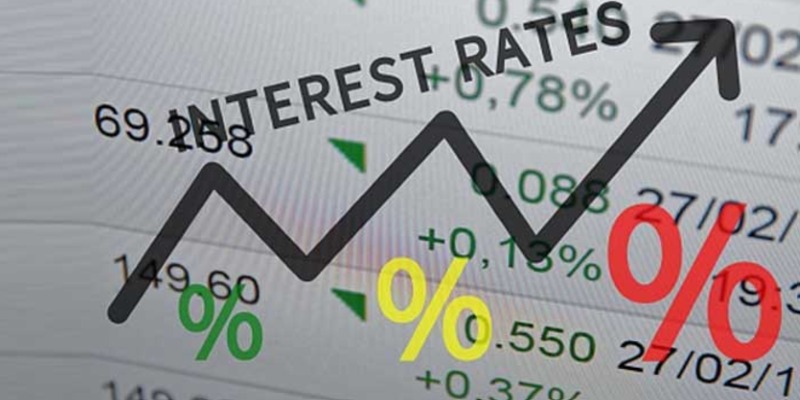How Rising Interest Rates Are Impacting Stock Market Performance
The stock market is a complex system influenced by many factors, and one of the most significant drivers is interest rates. As central banks adjust interest rates in response to inflation and other economic factors, the effects on the stock market are becoming increasingly evident. Rising interest rates directly impact the behaviour of investors, the cost of borrowing, and the overall economy, affecting stock prices. This article will examine how higher interest rates influence stock market performance, focusing on key areas such as investor sentiment, borrowing costs, market sectors, and long-term economic implications.
The Relationship Between Interest Rates And The Stock Market
At its core, interest rates are the cost of borrowing money. When interest rates rise, it becomes more expensive for businesses and consumers to borrow money. This, in turn, can slow down economic growth and reduce corporate profits, pushing stock prices lower. Additionally, higher interest rates can make fixed-income investments, such as bonds, more attractive relative to stocks, leading investors to shift their capital out of the stock market.

However, the relationship between interest rates and stock market performance can be complicated. In some cases, rising rates signal confidence in the economy, as central banks often raise rates to combat inflation when the economy is strong. In these instances, the market may view the rate hikes positively, especially if inflation is under control and companies can continue growing despite the higher borrowing costs. On the other hand, when interest rates are raised too quickly or too high, the market may become concerned about a potential economic slowdown, which can lead to increased volatility and declining stock prices.
Impact On Investor Sentiment
Investor sentiment plays a crucial role in determining stock market performance. When interest rates rise, it can cause a shift in investor outlook. Higher rates often lead to increased uncertainty, as investors worry about the potential for slower economic growth, lower corporate earnings, and reduced consumer spending. This can cause investors to become more risk-averse, opting for safer assets like bonds or cash equivalents instead of stocks.

Moreover, rising interest rates can lead to higher discount rates when valuing future corporate earnings. Since the value of a company's stock is essentially a present-day calculation of its future profits, higher interest rates reduce the present value of those earnings. This often results in lower stock valuations, particularly for growth stocks that rely on future growth for their valuation. As a result, sectors that are heavily dependent on future earnings projections, like technology and biotechnology, tend to be more sensitive to changes in interest rates.
The Cost Of Borrowing And Corporate Profits
Higher interest rates raise companies' borrowing costs, which can reduce profitability. Businesses often rely on debt to finance expansion, operations, and capital expenditures. As borrowing costs rise, it becomes more expensive for companies to service their debt, which can erode profit margins. This is especially true for companies with high debt levels, as they are more sensitive to interest rate increases.

In addition, higher borrowing costs can also lead to reduced consumer spending. When interest rates rise, consumers face higher loan costs for big-ticket items like homes, cars, and appliances. This can lead to reduced demand for products and services, which impacts company revenues and profits. For example, retail, real estate, and automobile industries often feel the effects of higher rates more acutely, as they are directly tied to consumer spending and financing.
Moreover, industries that rely heavily on capital investment, such as real estate development and infrastructure, may experience a slowdown in growth as the cost of financing projects increases. This can lead to weaker stock performance for companies in these sectors.
Sector-Specific Impacts

While rising interest rates generally exert downward pressure on the stock market, different sectors are affected in varying ways. Some sectors are more sensitive to interest rates than others, and understanding these dynamics is crucial for investors looking to navigate a rising-rate environment.
Technology And Growth Stocks
As mentioned, growth stocks tend to be more sensitive to interest rate increases. This is because their valuations are often based on expectations of strong future earnings growth, and higher interest rates reduce the present value of those future earnings. As a result, technology companies, especially those in the early stages of development or those with unprofitable business models, tend to need more support when rates rise. In 2024, this trend has been evident as tech stocks have experienced higher volatility, particularly those with high price-to-earnings ratios heavily dependent on future growth.
Financials
The financial sector, particularly banks and other lending institutions, often benefits from rising interest rates. Banks make money from the difference between the interest they pay on deposits and the interest they charge on loans. This "net interest margin" typically increases when interest rates rise, leading to higher bank profitability. Banks may see a rise in stock prices when interest rates go up as investors anticipate more significant earnings potential.
Consumer Staples
Consumer staples, which include companies that produce essential goods like food, beverages, and household products, tend to be more resistant to the negative impacts of rising interest rates. Since demand for these products is relatively inelastic, even during the economic slowdown, consumer staples companies often perform better during rising rates. In 2024, investors have looked to defensive stocks like these as a haven during market uncertainty.
Utilities
Rising interest rates negatively impact the utilities sector. Many utility companies carry large amounts of debt to finance infrastructure projects, and higher interest rates increase the cost of servicing this debt. As a result, utilities often see declines in their stock prices when rates rise. Additionally, utility stocks are often seen as a substitute for bonds, so as bond yields increase, utility stocks become less attractive to investors.
Real Estate
The real estate sector is susceptible to interest rates. Rising rates typically lead to higher mortgage rates, which can reduce demand for housing and slow down construction activity. Real estate investment trusts (REITs), which depend on financing to purchase and develop properties, may also struggle as borrowing costs increase. In 2024, the housing market has shown signs of cooling due to higher mortgage rates, leading to weaker performance in real estate stocks.
Long-Term Economic Implications
While the short-term effects of rising interest rates on the stock market are often more immediate and visible, the long-term implications are just as important. Central banks typically raise interest rates to combat inflation or to cool an overheating economy. If interest rates remain high for an extended period, it could signal a prolonged economic slowdown or recession. In this scenario, stock market performance could continue to decline as consumer and business activity slows down, leading to lower corporate profits and weaker demand for goods and services.
On the other hand, if the rate hikes successfully curb inflation without causing a recession, the economy may stabilize, which could eventually benefit the stock market. The key will be finding a balance—too many rate hikes in too short a time could risk pushing the economy into a downturn. At the same time, more moderate, gradual increases could help restore price stability without harming economic growth.
Conclusion
The impact of rising interest rates on the stock market is multifaceted. While higher rates generally lead to lower stock prices as borrowing becomes more expensive and corporate profits shrink, the effects can vary widely across different sectors. Some sectors, like financials and consumer staples, may benefit from rising rates, while others, such as technology and real estate, are more likely to experience challenges. Ultimately, investors must carefully consider the broader economic context, sector dynamics, and long-term trends when navigating a rising interest-rate environment. Understanding these factors is crucial for making informed investment decisions in 2024 and beyond.

